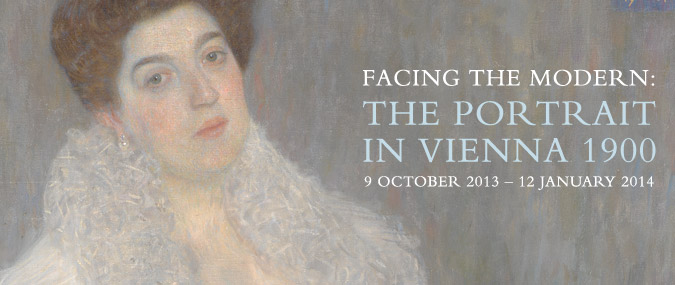Vienna 1900 – the result of revolution. As an imperial capital of Austria-Hungary, the city was politically and socially volatile to its core. It was an avant-garde powerhouse of creativity and radical ideas about taste, aesthetics and multiculturalism. But just beneath this facade of modernity, the age-old insecurities about social status and national identity still thrived. Prior to 1900, the city’s liberal climate had attracted immigrants from across the whole Empire, many of whom became successful, wealthy and cultured members of the middle classes. These citizens were the ‘New Viennese’. But the liberalism that had drawn them to Vienna was short-lived.
Nationalism, conservatism and anti-Semitism increased with the foundation of the Austrian Christian Social Party under Karl Lueger, who was then elected mayor of Vienna in 1897. The diversity that previously had been embraced was suddenly rejected, and the newly established middle classes had somehow to prove themselves and defend their position.
The New Viennese turned to portraiture, in a city where modern art was flourishing. The National Gallery’s Facing the Modern exhibition addresses these political twists and turns very effectively. It illustrates how the ambitious middle classes reacted against anti-liberalism using portraiture and theatricality as tools to assert themselves, and how their social instability resulted in a sense of alienation that permeated their whole world. The first room, titled ‘The Old Viennese’, highlights the significance of the Miethke Gallery’s 1905 exhibition of portraits from the first half of the 19th century. These portraits were intended to anchor the present to the past; to identify a lineage between the new and old that would pacify the middle classes’ anxieties about their social standing. The stylistic traits of the works, based on the Biedermeier tradition, also provide an effective point of comparison for the later Secession works.
The Secessionists took their name from the verb ‘to secede’, meaning ‘to withdraw’. Like the Impressionists, they rejected the strict values of the academies and embraced the avant-garde, the different and the modern. The portraits exhibited in this exhibition displayed the vitality and powerful expressivity of the Secessionist painters. The ‘Big 3’ were represented (Gustav Klimt, Egon Schiele and Oskar Kokoschka) in haunting and stunning works like Klimt’s unfinished Portrait of Amalie Zuckerkandl and Schiele’s expressive and immediate Self Portrait with Raised Bare Shoulder, but there were also some real gems to be found in some of the lesser known artists. Isidor Kauffman’s Young Rabbi from N. is a poignant statement about what it meant to be Jewish in an anti-Semitic political climate. This beautiful portrait defends Judaism and its place in Vienna, yet proudly owns its differences.
The second room reflected the reformed face of domestic values and what constitutes a family portrait; Freud’s Three Essays on the Theory of Sexuality posed serious questions for family life. The portraits on display here demonstrated a sense of vulnerability, and once again, anxiety. Schiele’s unsettling work The Family (Self Portrait) from 1918 shows how much family portraits had changed since the work of Ferdinand Georg Waldmüller, for example. Another room focused on the self-portrait and how self-definition was paramount, and another on women artists and their position within the artistic infrastructure. Broncia Koller’s Nude Portrait of Marietta from 1907 represents a model as both a studio nude and a portrait, and is strikingly beautiful in its sophisticated simplicity.
The penultimate space was dedicated to death and Vienna’s morbid fascinations. Posthumous and deathbed portraiture were very popular (as were death masks), and while this may seem rather pessimistic to current viewers, these works were often celebratory a well as commemorative. The idea of the ‘beautiful corpse’ (schöne Leich) embodies this juxtaposition of beauty and dignity in life with beauty after death. Klimt’s portrait of Ria Munk on her Deathbed (1912) is a perfect example of this kind of celebration. Her head resting on a pillow, surrounded by flowers, the young woman could be mistaken for a literary maiden asleep, vulnerable yet beautiful, rather than the tragic reality of a young woman who shot herself in the heart.
Despite scathing reviews from the Guardian, in my opinion Gemma Blackshaw curated a show which informatively and enjoyably combined the old with the new and demonstrates the expressive power of the portrait. Having just returned from Vienna myself, I can testify to its current magnificence and beauty. Sadly, much of it is a reconstruction, having been torn apart by war. But seeing this exhibition before I arrived helped me to imagine what an incredibly diverse and complex climate had occupied the city about a century ago; a radical age of theatricality, wonder, constant change and most importantly, anxiety.
With thanks to the National Gallery. For more information, please see their website and the exhibition catalogue.








